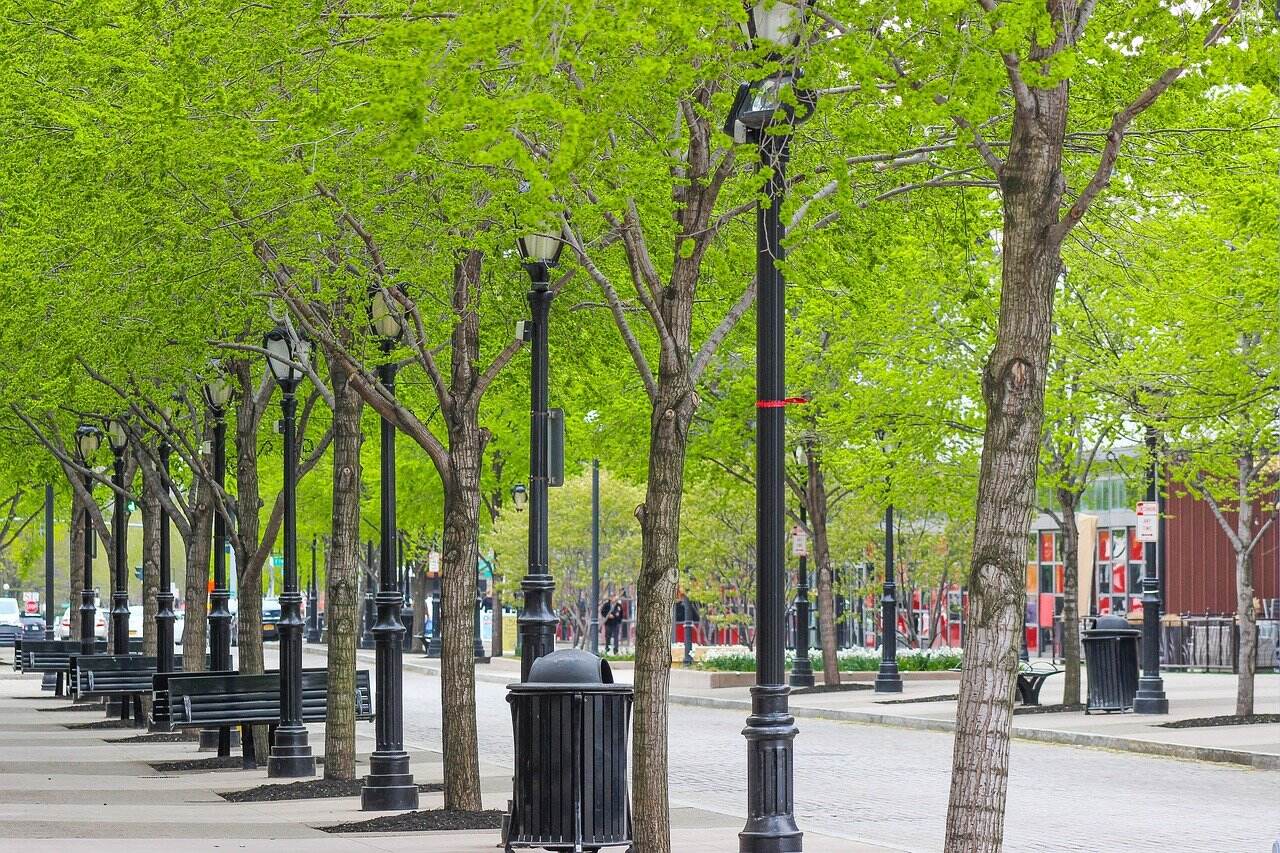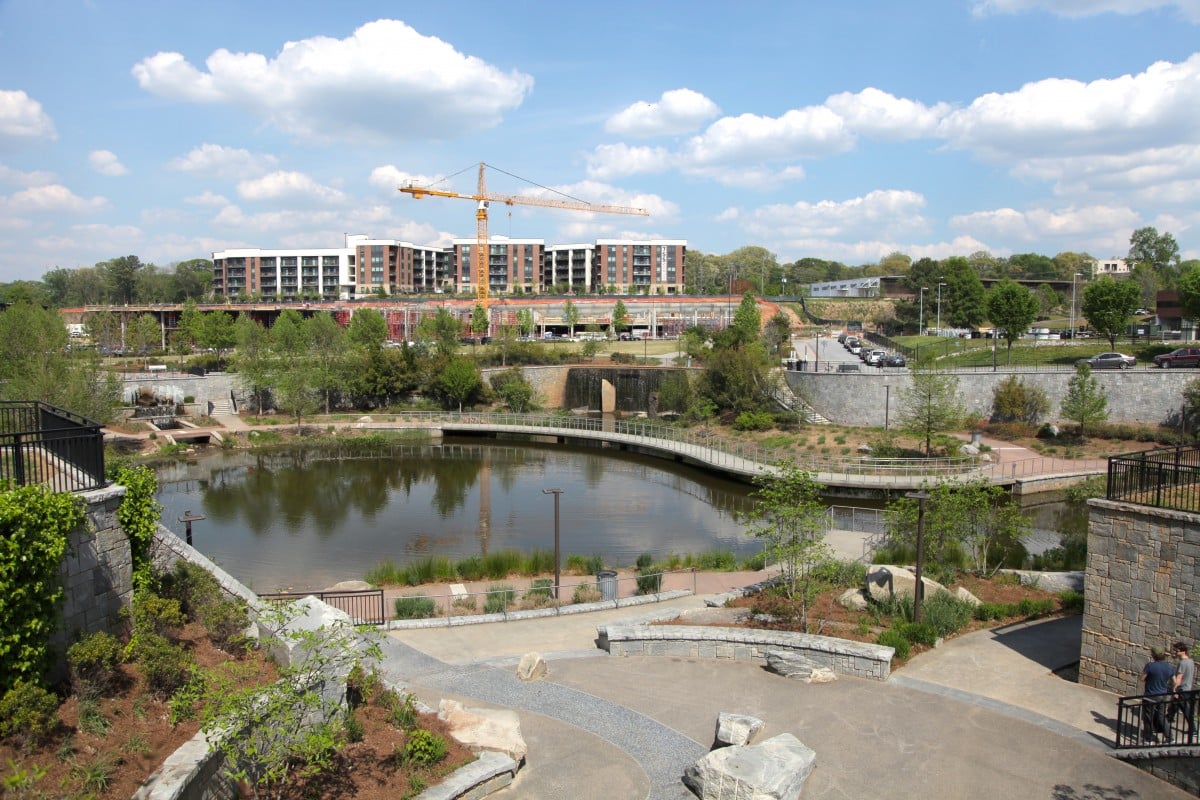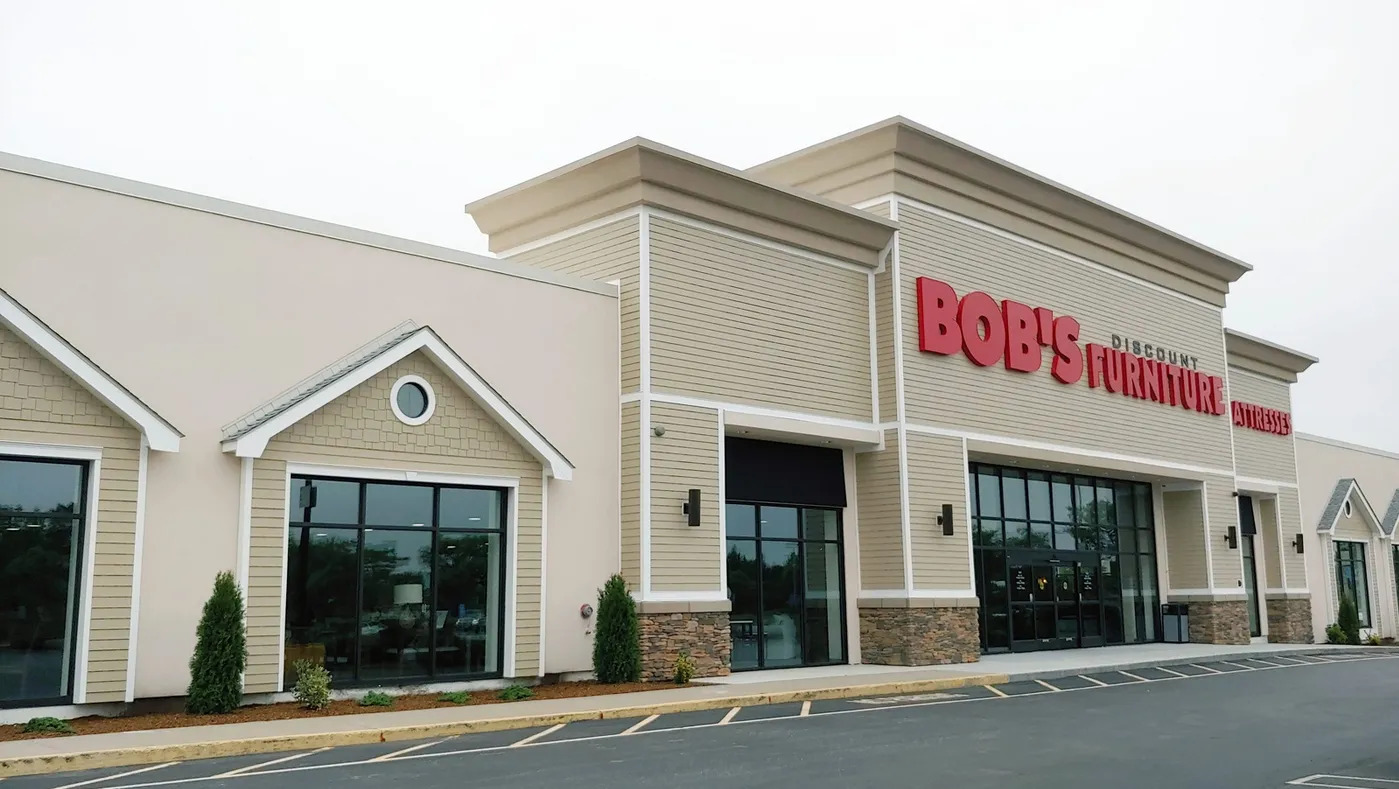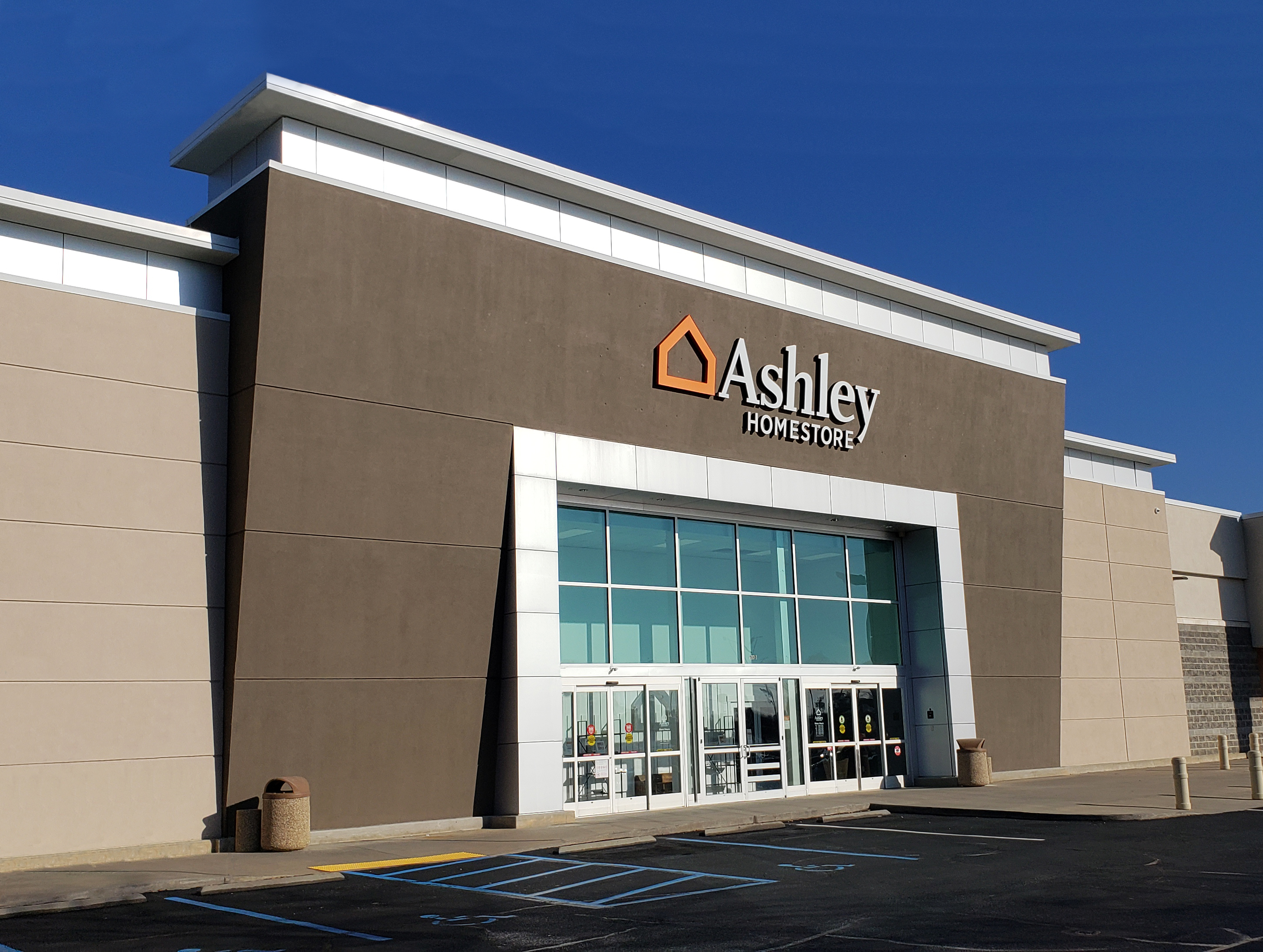Home>Garden Essentials>Who Conducts Data Analysis On Urban Green Spaces


Garden Essentials
Who Conducts Data Analysis On Urban Green Spaces
Modified: August 17, 2024
Looking for experts in garden data analysis for urban green spaces? Find out who conducts data analysis on gardens and enhances urban planning with sustainable green solutions.
(Many of the links in this article redirect to a specific reviewed product. Your purchase of these products through affiliate links helps to generate commission for Storables.com, at no extra cost. Learn more)
Introduction
Welcome to the world of urban green spaces! In our increasingly urbanized society, the value of these green spaces cannot be understated. They provide a refuge from the hustle and bustle of city life, offering an oasis of tranquility and natural beauty. However, managing and maintaining these urban green spaces requires a deep understanding of their ecological and social dynamics. This is where data analysis comes in.
Data analysis plays a pivotal role in evaluating and improving urban green spaces. It provides insights into their current condition, identifies areas for improvement, and helps measure the impact of interventions and management strategies. By harnessing the power of data analysis, urban planners, environmentalists, and landscape architects can make informed decisions to optimize the design, function, and management of these vital green spaces.
One of the key benefits of data analysis in urban green spaces is its ability to provide objective and quantifiable metrics. By collecting and analyzing data on various parameters such as plant biodiversity, water quality, air pollution levels, and visitor patterns, professionals can gain a comprehensive understanding of the health and performance of these spaces.
Furthermore, data analysis allows us to identify patterns and trends over time. By monitoring the changes in vegetation cover, wildlife populations, and user behavior, we can assess the long-term sustainability and resilience of urban green spaces. This information is crucial for ensuring that these spaces continue to thrive and provide the multitude of benefits they offer to both humans and the environment.
However, conducting data analysis on urban green spaces is not without its challenges. First and foremost, the collection of accurate and reliable data can be a daunting task. It requires careful planning, the use of appropriate sensors and monitoring devices, and the involvement of skilled professionals.
Additionally, the interpretation and analysis of data can be complex. It often involves statistical analysis, spatial mapping, and data visualization techniques to effectively communicate the findings to stakeholders and decision-makers. Proficiency in these analytical tools and techniques is essential for extracting meaningful insights from the vast amount of data collected.
In the next sections, we will explore the professionals who conduct data analysis on urban green spaces, the qualifications and skills required for this role, the tools and techniques used, and the benefits of effective data analysis. Together, we will delve into the fascinating world of data-driven insights that shape and optimize our urban green spaces.
Key Takeaways:
- Data analysis helps experts understand and improve city green spaces by collecting and analyzing information on plants, wildlife, and visitor behavior. This helps create better and more sustainable urban parks.
- Professionals like environmental scientists, data analysts, and landscape architects work together to use data analysis tools and techniques to make urban green spaces more enjoyable, eco-friendly, and beneficial for communities.
Role of Data Analysis in Urban Green Spaces
Data analysis plays a crucial role in understanding and enhancing the quality and sustainability of urban green spaces. By analyzing relevant data, professionals can gain valuable insights into the ecological, social, and economic aspects of these spaces. Here are some key roles that data analysis serves in the context of urban green spaces:
- Assessment of Environmental Health: Data analysis allows us to assess the environmental health of urban green spaces. By analyzing data on air and water quality, soil health, and biodiversity, professionals can identify potential issues and take corrective measures. For example, if data indicates high levels of air pollution in a particular green space, steps can be taken to mitigate the pollution sources and improve air quality. Similarly, analyzing water quality data may identify pollution sources that need to be addressed to protect ecosystems and ensure the safety of visitors.
- Monitoring Natural Resources: Urban green spaces are home to a variety of natural resources, such as trees, plants, and wildlife. Data analysis helps monitor and manage these resources effectively. By analyzing data on tree health, growth patterns, and species diversity, professionals can identify areas where tree planting or management interventions are needed. Monitoring wildlife populations through data analysis allows us to understand their distribution and behavior, helping in their conservation and fostering biodiversity in urban areas.
- Evaluating User Experience: Urban green spaces are created for the well-being and enjoyment of the community. Data analysis can provide insights into the usage patterns, preferences, and satisfaction levels of visitors. By collecting data on footfall, user surveys, and social media sentiment analysis, professionals can understand how people engage with green spaces, and identify any improvements or additions to enhance the user experience. This can include adding amenities, improving accessibility, or organizing events and activities that cater to the needs and interests of the community.
- Optimizing Design and Management: Data analysis is key to optimizing the design and management of urban green spaces. By analyzing data on park layout, pathways, and amenities, professionals can identify areas for improvement and make informed decisions during the design and planning phase of green space development. Additionally, data analysis helps optimize the management of resources, such as water usage, waste management, and energy consumption, leading to more sustainable and efficient operations.
- Evaluating Impact and Return on Investment: Data analysis enables professionals to evaluate the impact of interventions and investments in urban green spaces. By collecting data on usage, attendance, and economic indicators such as tourism revenue and property values, professionals can assess the return on investment and make evidence-based decisions regarding future funding and management strategies. This helps in demonstrating the value and importance of green spaces to stakeholders and decision-makers.
In summary, data analysis is an essential tool for understanding, managing, and enhancing urban green spaces. By providing valuable insights into environmental health, natural resources, user experience, design and management, and impact evaluation, data analysis helps create vibrant and sustainable green spaces that benefit both people and the environment.
Importance of Data Analysis in Evaluating Urban Green Spaces
Data analysis plays a critical role in evaluating the effectiveness and impact of urban green spaces. By analyzing relevant data, professionals can gather valuable insights that inform decision-making processes and drive improvements. Here are some key reasons why data analysis is essential in evaluating urban green spaces:
- Evidence-Based Decision Making: Data analysis provides objective and quantifiable metrics that drive evidence-based decision making. It allows professionals to measure and assess the performance of green spaces based on various factors such as ecological health, user satisfaction, and economic impact. By leveraging data analysis, decision-makers can make informed choices about resource allocation, design modifications, and management strategies to maximize the benefits and value of urban green spaces.
- Identifying Areas for Improvement: Through data analysis, professionals can identify areas within urban green spaces that require improvement. For example, analyzing data on visitor behavior and feedback can reveal areas that are underutilized or in need of enhancement, such as additional seating, better lighting, or improved signage. By identifying these areas, urban planners and landscape architects can implement targeted improvements to enhance the overall experience and functionality of the green space.
- Measuring Environmental Impact: Data analysis allows for the measurement and evaluation of the environmental impact of urban green spaces. By analyzing data on air quality, carbon sequestration, and biodiversity, professionals can assess the contribution of green spaces to mitigating urban pollution and supporting biodiversity. This information is essential for quantifying the environmental benefits of green spaces and advocating for their protection and expansion.
- Assessing Social and Health Impacts: Urban green spaces have a significant impact on the well-being of the community. Data analysis helps professionals evaluate the social and health impacts of these spaces by analyzing data related to physical activity, mental health, and social cohesion. For instance, by analyzing data on park usage and physical activity levels, researchers can determine the impact of green spaces on promoting active lifestyles and preventing chronic diseases. This information can then be used to guide policies and interventions aimed at enhancing public health and well-being.
- Tracking Long-Term Performance: Data analysis enables the tracking of long-term performance trends and patterns in urban green spaces. By collecting and analyzing data over time, professionals can identify shifts and changes in parameters such as vegetation cover, water quality, and wildlife populations. This helps in assessing the long-term sustainability and resilience of green spaces and enables proactive management to address emerging issues and ensure their continued success.
Overall, data analysis is of utmost importance in evaluating urban green spaces. It provides a scientific and evidence-based approach to assess their performance, identify areas for improvement, measure their environmental and social impacts, and track long-term trends. By leveraging the power of data, professionals can make informed decisions that enhance the quality and sustainability of urban green spaces, ultimately benefiting both the community and the environment.
Challenges in Conducting Data Analysis on Urban Green Spaces
While data analysis offers valuable insights into urban green spaces, it is not without its challenges. Conducting data analysis in this context requires addressing various obstacles to ensure accurate and meaningful results. Here are some of the key challenges encountered in conducting data analysis on urban green spaces:
- Data Collection: Collecting data for analysis can be a complex and time-consuming process. It requires careful planning, identification of relevant parameters, and the deployment of appropriate monitoring devices. Obtaining reliable and high-quality data is crucial for accurate analysis, but logistical challenges, such as accessing remote locations or the need for specialized equipment, can make data collection challenging.
- Data Management: Managing data collected from multiple sources can be a challenge in data analysis for urban green spaces. The volume and variety of data can be overwhelming, making it difficult to store, organize, and integrate different datasets. Data management systems and protocols need to be in place to ensure data integrity, security, and accessibility for analysis.
- Data Quality: Ensuring the quality and accuracy of data is essential for meaningful analysis. Data integrity can be compromised by various factors, including measurement errors, inconsistent data collection methods, or data gaps. It requires careful validation and verification processes to identify and rectify any data quality issues that could impact the analysis and interpretation of results.
- Data Interoperability: Urban green spaces encompass various interconnected factors and disciplines, such as ecology, climate, social dynamics, and economics. Integrating data from different sources and disciplines can be challenging due to differences in data formats, scales, and units of measurement. To overcome this challenge, data standardization and interoperability frameworks need to be established, allowing for seamless integration and analysis across diverse datasets.
- Data Analysis Methods: Selecting appropriate data analysis methods can be challenging due to the complexity and multidimensionality of urban green spaces. Different data analysis techniques may be required for various parameters, such as spatial analysis for vegetation distribution, statistical analysis for user surveys, or machine learning algorithms for predicting environmental impacts. Having a diverse skill set and knowledge of various analysis techniques is crucial for effectively analyzing the data.
- Data Interpretation and Communication: Once the analysis is performed, effectively interpreting and communicating the results to stakeholders can be challenging. Data analysis can produce complex and technical findings, which need to be translated into meaningful and actionable insights for decision-makers. Presenting data in a clear, visual, and understandable manner plays a crucial role in facilitating informed decision-making and promoting broader understanding and support for urban green spaces.
Despite these challenges, the importance of data analysis in understanding and improving urban green spaces cannot be overlooked. By addressing these obstacles through careful planning, collaboration, and utilization of appropriate tools and technologies, professionals can overcome challenges and unlock the valuable potential of data analysis for the benefit of urban green spaces and the communities they serve.
Professionals Who Conduct Data Analysis on Urban Green Spaces
Conducting data analysis on urban green spaces requires the expertise of professionals with a unique blend of knowledge in both environmental science and data analysis. These professionals play a crucial role in collecting, analyzing, and interpreting data to gain insights into the ecological, social, and economic aspects of urban green spaces. Here are some key professionals who are involved in the data analysis process:
- Environmental Scientists: Environmental scientists specialize in studying the natural environment and its interactions with human activities. They have a deep understanding of ecological concepts, including plant and wildlife species, ecosystems, and environmental processes. Environmental scientists play a vital role in collecting and analyzing environmental data, such as air quality, water quality, vegetation cover, and biodiversity measurements.
- Data Analysts/Scientists: Data analysts or scientists have expertise in statistical analysis, data management, and data visualization techniques. They are responsible for collecting, organizing, and analyzing the data collected from urban green spaces. They apply various statistical methods and machine learning algorithms to discover patterns, correlations, and trends within the data. Data analysts are skilled in transforming complex data into actionable insights.
- Landscape Architects: Landscape architects are involved in the planning, design, and management of urban green spaces. They work closely with environmental scientists and data analysts to incorporate data-driven insights into the design process. Landscape architects utilize the findings from data analysis to optimize the layout, functionality, and aesthetics of green spaces. They also play a role in identifying appropriate plant species and designing sustainable landscaping solutions.
- Urban Planners: Urban planners are professionals who are responsible for the development and management of urban spaces. They work collaboratively with environmental scientists and data analysts to incorporate data analysis results into urban planning processes. Urban planners use the insights gained from data analysis to make informed decisions about the location, design, and management of urban green spaces. They consider factors such as population needs, socio-economic considerations, and community engagement in their planning efforts.
- GIS Specialists: Geographic Information System (GIS) specialists are experts in spatial data analysis and mapping. They have a deep understanding of GIS software and tools used to analyze and visualize spatial data related to urban green spaces. GIS specialists work closely with environmental scientists and data analysts to integrate spatial data such as land use, vegetation cover, and infrastructure, into the analysis process. They also help create visual representations of the data, such as maps and geospatial models, to aid in decision-making and communication.
- Social Scientists: Social scientists are involved in studying the social dynamics and impacts of urban green spaces. They collect and analyze data related to user behavior, perceptions, and preferences through surveys, interviews, and observational studies. Social scientists work in collaboration with environmental scientists and data analysts to interpret the social data and understand how it intersects with the ecological aspects of urban green spaces. This interdisciplinary approach helps to ensure that the analysis considers both the natural and human dimensions of green spaces.
These professionals often collaborate as multidisciplinary teams to conduct data analysis on urban green spaces. Their collective expertise helps to integrate environmental, social, and economic considerations into a comprehensive analysis, leading to informed decision-making and the sustainable management and improvement of urban green spaces.
Urban green space data analysis is often conducted by environmental scientists, urban planners, and researchers. They use geographic information systems (GIS) and statistical software to analyze and interpret data on urban green spaces.
Read more: What Is Urban Garden
Qualifications and Skills Required for Data Analysis in Urban Green Spaces
Professionals involved in data analysis for urban green spaces require a combination of qualifications, technical skills, and domain knowledge to effectively collect, analyze, and interpret data. Here are some of the key qualifications and skills required for data analysis in urban green spaces:
- Education in Environmental Science or a related field: A strong educational background in environmental science, ecology, or a related field is essential for professionals conducting data analysis in urban green spaces. A solid understanding of ecological principles, including plant and wildlife species, ecosystems, and environmental processes, is necessary for analyzing and interpreting environmental data.
- Data Analysis and Statistical Skills: Proficiency in data analysis and statistical techniques is critical for professionals in this field. They should have a sound knowledge of statistical methods such as regression analysis, hypothesis testing, and data visualization. This skill set allows them to analyze data, identify patterns and trends, and draw meaningful insights from the collected information.
- GIS and Spatial Analysis: Geographic Information System (GIS) skills are highly valuable for data analysis in urban green spaces. Professionals should be proficient in using GIS software to collect, manage, analyze, and interpret spatial data. This skill set enables them to map and visualize data, perform spatial analysis, and integrate spatial and non-spatial data, enhancing the analysis and understanding of urban green spaces.
- Data Management and Programming: Data analysts in this field should have strong data management and programming skills. They should be proficient in managing and cleaning large datasets, structuring data sets for analysis, and ensuring data security and integrity. Additionally, knowledge of programming languages such as R or Python is essential for automating data analysis processes, creating scripts, and implementing algorithms.
- Domain Knowledge of Urban Green Spaces: Professionals need a deep understanding of urban green spaces, including their ecological dynamics, socio-economic context, and management practices. This knowledge enables them to identify relevant variables for analysis, interpret data within the specific urban green space context, and provide recommendations and solutions tailored to the unique challenges and requirements of these spaces.
- Communication and Collaboration: Effective communication and collaboration skills are essential for professionals involved in data analysis for urban green spaces. They should be able to communicate complex findings and insights to stakeholders with varying levels of technical expertise. Strong collaboration skills are required to work effectively in multidisciplinary teams, including environmental scientists, landscape architects, urban planners, and social scientists.
- Continuous Learning and Adaptability: Given the rapidly evolving field of data analysis, professionals need to be committed to continuous learning and staying up-to-date with the latest techniques, tools, and research in the field. They should be adaptable to changing circumstances and be able to apply new methods and technologies to improve data collection, analysis, and interpretation processes.
These qualifications and skills provide a solid foundation for professionals conducting data analysis in urban green spaces. By combining their technical expertise with a deep understanding of environmental science, data analysis, spatial analysis, and effective communication, these professionals can derive meaningful insights that inform decision-making and contribute to the sustainable management and improvement of urban green spaces.
Tools and Techniques Used in Data Analysis for Urban Green Spaces
Data analysis for urban green spaces involves the application of various tools and techniques to collect, analyze, and interpret data. These tools and techniques enable professionals to gain insights into the ecological, social, and economic aspects of urban green spaces. Here are some of the key tools and techniques used in data analysis for urban green spaces:
- Data Collection Tools: Professionals use a range of tools and instruments to collect data in urban green spaces. This may include environmental sensors for monitoring air and water quality, vegetation surveys for assessing biodiversity, GPS devices for capturing spatial data, and user surveys for gathering information on user experience and preferences.
- Geographic Information System (GIS): GIS software is an essential tool for data analysis in urban green spaces. GIS allows professionals to collect, manage, analyze, and visualize spatial data related to green spaces. It enables the integration of different layers of information, such as land cover, infrastructure, and user data, on a spatial map to identify patterns, hotspots, and relationships between variables.
- Statistical Analysis Software: Statistical analysis software, such as R or SPSS, is commonly used to perform data analysis in urban green spaces. These tools provide a wide range of statistical techniques for analyzing data, including regression analysis, hypothesis testing, and analysis of variance (ANOVA). They allow professionals to explore relationships, examine trends, and determine the significance of variables within the dataset.
- Data Visualization Tools: Data visualization tools, such as Tableau or matplotlib, help professionals present data in an interactive and visually appealing manner. These tools allow for the creation of charts, graphs, maps, and dashboards that enable stakeholders to understand complex data patterns and trends more easily. Visualizations can aid in communicating findings, insights, and recommendations to a broad audience effectively.
- Spatial Analysis Techniques: Spatial analysis techniques are used to analyze the spatial relationships and patterns within urban green spaces. This includes analyzing the distribution of vegetation cover, identifying fragmentation of habitat patches, conducting hotspot analysis to identify areas with high biodiversity, and assessing spatial autocorrelation to determine if certain variables show spatial clustering.
- Machine Learning and Predictive Modeling: Machine learning algorithms and predictive modeling techniques are increasingly being utilized in data analysis for urban green spaces. These techniques can help forecast variables such as tree growth patterns, carbon sequestration potential, or visitor patterns. Machine learning algorithms can identify patterns and relationships within the data that may not be apparent through traditional statistical analysis methods.
- Social Network Analysis: Social network analysis is a technique used to analyze social interactions and relationships between individuals or groups. In the context of urban green spaces, it can be used to identify social connections and patterns of communication among users, assess the influence of social networks on park usage, and understand the social dynamics within the green space.
These are just a few examples of the tools and techniques commonly used in data analysis for urban green spaces. The selection of specific tools and techniques depends on the research objectives, data availability, and the expertise of the professionals conducting the analysis. By utilizing these tools effectively, professionals can gain valuable insights that inform decision-making, enhance the management of green spaces, and contribute to the well-being of communities and the environment.
Case Studies of Data Analysis on Urban Green Spaces
Data analysis has been instrumental in understanding and improving urban green spaces across the globe. Here are a few notable case studies that illustrate the power of data analysis in enhancing the design, management, and performance of urban green spaces:
- Millennium Park, Chicago: Data analysis played a crucial role in the design and management of Millennium Park in Chicago. By collecting and analyzing data on visitor behavior, such as footfall, gathering points, and preferred activities, landscape architects and urban planners were able to optimize the layout and amenities in the park. The analysis also identified areas where additional seating and shade were needed, resulting in improved user experience and increased visitor satisfaction.
- Bosco Verticale, Milan: Data analysis was employed to assess the ecological performance of Bosco Verticale, a pair of residential towers in Milan with extensive vertical greenery. By analyzing data on air quality, temperature fluctuations, and bird populations, researchers found that the towers significantly improved air quality and provided habitat for diverse bird species. This data-driven analysis helped validate the ecological benefits of vertical greenery and contributed to the replication of similar designs worldwide.
- High Line Park, New York City: Data analysis played a critical role in transforming an abandoned elevated railway in New York City into the iconic High Line Park. Environmental scientists and landscape architects collected and analyzed data on soil conditions, plant species diversity, and user behavior. The analysis revealed the need for innovative planting techniques in the constrained urban environment, resulting in the selection of suitable plant species and the creation of a unique and ecologically diverse green space.
- Singapore’s National Parks Monitoring Program: Singapore’s National Parks Monitoring Program employs data analysis to assess the performance and ecological health of its urban green spaces. The program collects and analyzes data on biodiversity indicators, water quality, air quality, and user satisfaction across a network of parks and nature reserves. The findings from these analyses guide targeted interventions, such as habitat restoration and visitor education programs, to ensure the long-term sustainability and conservation of Singapore’s green spaces.
- Green City Index, Vancouver: Data analysis has been used in Vancouver’s Green City Index project to evaluate the sustainability and livability of urban green spaces. By analyzing data on factors such as energy consumption, waste generation, access to green space, and public transportation usage, the analysis highlighted areas for improvement and informed policy decisions. The findings led to initiatives like expanding green space networks, improving cycling infrastructure, and implementing energy-efficient systems in urban parks.
These case studies demonstrate the diverse applications and benefits of data analysis in urban green spaces. By harnessing the power of data, professionals have been able to optimize designs, enhance ecological performance, improve user experience, and guide policy decisions, leading to more sustainable and vibrant urban green spaces for communities to enjoy.
Benefits of Effective Data Analysis for Urban Green Spaces
Effective data analysis plays a pivotal role in enhancing urban green spaces, providing a range of benefits that improve their overall quality and sustainability. Here are some key benefits of effective data analysis for urban green spaces:
- Evidence-Based Decision Making: Data analysis provides objective and evidence-based insights that guide decision-making processes for urban green spaces. By analyzing data on ecological health, user preferences, and economic impacts, decision-makers can make informed choices about resource allocation, design modifications, and management strategies. This ensures that decisions are grounded in data, leading to the most effective and efficient use of resources.
- Improved Design and Planning: Data analysis allows for the optimization of design and planning processes for urban green spaces. By analyzing data on user behavior, spatial patterns, and ecological dynamics, professionals can identify areas for improvement and make informed design decisions. This results in well-designed green spaces that address the needs of the community, maximize functionality, and enhance aesthetic appeal.
- Enhanced Ecological Performance: Effective data analysis enables professionals to understand and improve the ecological performance of urban green spaces. By analyzing data on biodiversity, vegetation cover, and soil quality, they can identify opportunities for enhancing ecological resilience and promoting habitat connectivity. This can lead to an increase in native wildlife populations, improved ecosystem services, and a better overall balance between human activities and nature.
- Optimized Resource Allocation: Data analysis helps optimize resource allocation in urban green spaces. By analyzing data on water consumption, energy usage, and waste generation, professionals can identify areas of inefficiency and implement resource-saving measures. This leads to more sustainable operations, reduced environmental impact, and cost savings in the long run.
- Enhanced User Experience: Data analysis enables the improvement of user experiences in urban green spaces. By analyzing data on visitor behavior, preferences, and satisfaction, professionals can identify areas for improvement, such as adding amenities, addressing safety concerns, or improving accessibility. This leads to enhanced user satisfaction, increased usage, and a stronger sense of connection and well-being within the community.
- Evidence of Impact and Return on Investment: Data analysis provides a means to evaluate the impact and return on investment of urban green spaces. By analyzing data on park attendance, economic indicators, and environmental performance, professionals can demonstrate the value and benefits that green spaces provide to the community. This helps secure funding, gain support from stakeholders, and advocate for the continued development and maintenance of urban green spaces.
Overall, effective data analysis brings numerous benefits to urban green spaces. It guides evidence-based decision making, enhances ecological performance, optimizes resource allocation, improves the user experience, and provides evidence of the impact and value of green spaces. By harnessing the power of data, professionals can create vibrant, sustainable, and thriving urban green spaces that contribute to the well-being of communities and the environment.
Conclusion
Data analysis is a powerful tool that plays a vital role in understanding, managing, and improving urban green spaces. By analyzing relevant data, professionals can gain valuable insights into the ecological, social, and economic aspects of these spaces. This knowledge allows for evidence-based decision making, enhances the design and planning processes, improves ecological performance, optimizes resource allocation, enhances user experiences, and provides evidence of the impact and value of urban green spaces.
However, conducting data analysis for urban green spaces is not without its challenges. From data collection and management to analysis methods and interpretation, professionals face obstacles that must be overcome to ensure accurate and meaningful results. Collaboration and expertise from a variety of professionals, including environmental scientists, data analysts, landscape architects, urban planners, GIS specialists, and social scientists, are essential for successful data analysis in this context.
The benefits of effective data analysis are far-reaching. It empowers decision-makers to make informed choices that optimize the design, functionality, and management of urban green spaces. It helps enhance ecological performance, leading to improved biodiversity, ecosystem services, and resilient habitats. It enables the efficient allocation of resources, resulting in reduced environmental impact and long-term cost savings. It enhances user experiences, creating welcoming and accessible green spaces that foster community well-being and connection. Furthermore, data analysis provides the evidence needed to secure support from stakeholders and advocates for the continued development and maintenance of urban green spaces.
In conclusion, data analysis is an invaluable tool in shaping and optimizing urban green spaces. By analyzing data, professionals can unlock insights that empower decision-making, drive improvements, and ensure the sustainable development and management of these vital spaces. As our societies become increasingly urbanized, the importance of data analysis in evaluating and enhancing urban green spaces will only continue to grow, contributing to the well-being of communities and the preservation of our environment for generations to come.
Frequently Asked Questions about Who Conducts Data Analysis On Urban Green Spaces
Was this page helpful?
At Storables.com, we guarantee accurate and reliable information. Our content, validated by Expert Board Contributors, is crafted following stringent Editorial Policies. We're committed to providing you with well-researched, expert-backed insights for all your informational needs.














0 thoughts on “Who Conducts Data Analysis On Urban Green Spaces”